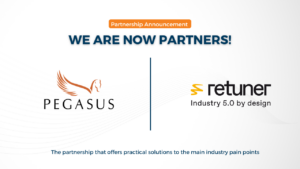The market of the Enterprise Application Integration is expected to grow at a CAGR of 15.42%
Mordor Intelligence Report
The proliferation of technologies like Big Data, cloud computing, and IoT, and trends like diverse workflow solutions are some key reasons behind its massive growth. To help you understand this technology more comprehensively, we have discussed all its significant aspects.
What is Application Integration?
In simple terms, application integration is the merger and optimization of workflows and data of two different applications. The purpose of integrating two individual applications is to streamline business processes within an organization. Who needs application integration?
Almost every major industry that needs to integrate enterprise applications like CRM (customer relationship management), ERP (enterprise resource planning), and SCM (supply chain management) depends on application integration. The following industries require this technology the most:
- BFSI (Banking, financial services, and insurance)
- IT (Information Technology)
- Telecom sector
- Healthcare
- Retail and e-commerce
- Supply chain management
- Government agencies
- Manufacturing
Best Application Integration Tools
Not every application integration tool matches your organization’s needs. It’s crucial to analyze the features and reviews of each tool to select the best. When choosing the application integration tool, keep the following factors in mind:
- User-friendliness: The software shouldn’t be too complex to install. It will be beneficial if the development environment of the software is intuitive.
- Proper support: A reliable open-source tool comes with all the necessary tutorials, videos, and articles. Conversely, there should be good support plans if you are choosing a proprietary tool.
- Licensing: Go through the subscription/model of the tool. Ensure you know how the upgrades will be offered.
Now that we have gone through the prerequisites of choosing the enterprise application integration software, let’s zoom in on some popular tools.
IBM WebSphere MQSeries – Using this tool, you can utilize your organization’s hardware and software assets to the fullest. There is no need for complex communication codes. The APIs that this tool offers are consistent in over 80 supported operating environments.
Oracle Fusion: If you are seeking a modular option, Oracle Fusion is your best bet. Install, configure, and utilize only those services that your company requires explicitly.
See Beyond: With this tool, you get facilities and tools like BAM (Business Activity Monitoring), OLAP (Online Analytical Processing), and portal builder.
Other reliable options include BizTalk, Tibco, Workato, WSO2 Enterprise Integrator, and webMethods Integration Platform.
Many organizations have a set of applications that deliver the best results when used independently.
Challenges of application integration
One of the common challenges arises when one needs to migrate applications that are tightly coupled with other systems, such as the operating system. These applications are often resistant to changes and updates. Companies need to pay a handsome amount to modify them.
In many organizations, there is a deficiency in the skillset needed for understanding the integration process. Not only does it hamper the efficiency of the digital transformation but also slows down the overall process. There isn’t any standardization for organizational- or industry-level best practices that the companies can follow.
How to integrate applications
APIs: The use of an API (application programming interface) is one of the common ways to integrate applications. In the current scenarios, web APIs are prevalent because they are readily available online with support documentation. Many firms and developers rely on web APIs, as they are usually built using XML and JSON.
Middleware: Setting up of application integration is typically done with the use of middleware. Middleware cuts down manual intervention and unnecessary long programming. When you are handling multiple applications, you can expect middleware to add efficiency to the workflow of integration.
FME: Popularly known for its data integration capabilities, FME is also used for application integration workflows. This integration platform enables you to switch from a legacy system to a cutting-edge process or to integrate applications as a continuous process.
Importance of enterprise application integration
Almost every department of an organization can enjoy the benefits of enterprise application integration. Let’s go through the major advantages:
Better productivity in manufacturing: Through enterprise-level communication and integration of individual operations, manufacturing units can evolve their designs that precisely match the customers’ needs. Through actionable manufacturing analytics, the management can have a 360-degree view of the supply chain operation.
Streamlining retail store operations: From efficiently allocating resources according to the needs to improving customer service, there are several benefits a retail store enjoys by integrating its applications. Central headquarters of retail chains can efficiently manage inventory in each store and also measure their KPIs (key performance indicators).
Interoperability between the departments: The U.S. auto industry loses up to one billion dollars each year due to interoperability faults. [Source: Research Gate]
Enterprise Application integration prevents industries from such losses by enabling access to complete information that the business applications gather. The need for data-processing responsibilities is minimized due to this. With access to valuable information, even line and middle managers can take more informed decisions.
Targeted marketing campaigns: By utilizing CRM software, marketers can design better marketing campaigns and shoot emails to the target customers—without relying on time and labor-intensive tasks. They can also track the results without much hassle.
The advantages vary by the industry and organization in which the integration application technology is being utilized.
Difference between data integration and application integration
There’s a clear difference between application integration and data integration. In application integration, live data moves from one application to another. On the other hand, data integration involves compiling data from different sources into a common repository. The actions of application integration happen instantly when an event occurs, whereas the data integration tasks take place periodically, in batches.
An application integration tool by Pegasus – Clockworx
Suitable for small and mid-sized manufacturers, CWX by Pegasus integrates applications of sales, project management, production, accounting, and human resource to allow the organizations to consolidate the entire manufacturing process. More transparency, more productivity, and more time—all result in an increased bottom line for the manufacturers.



